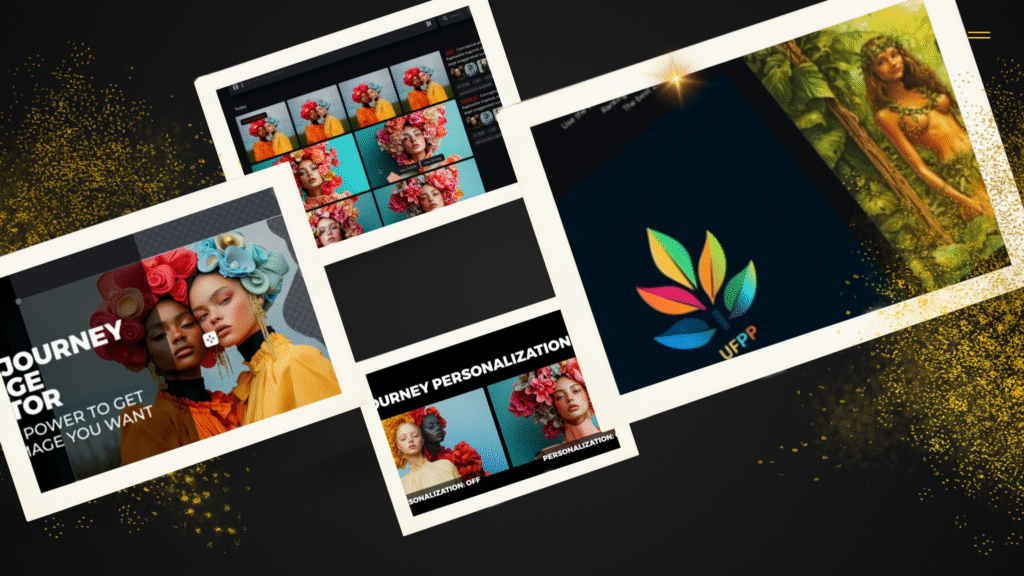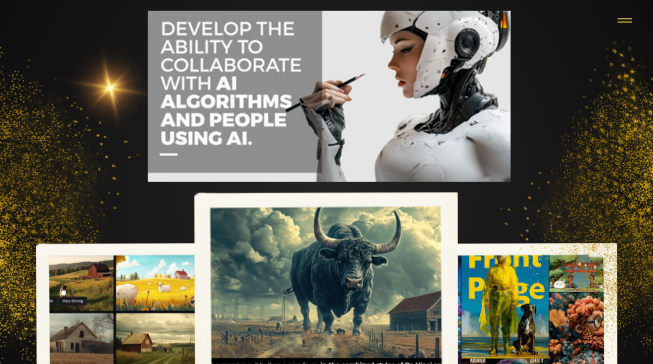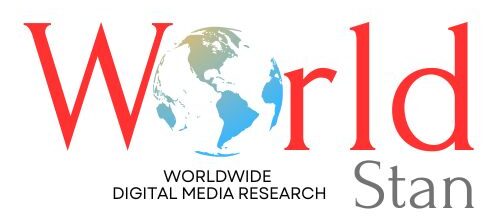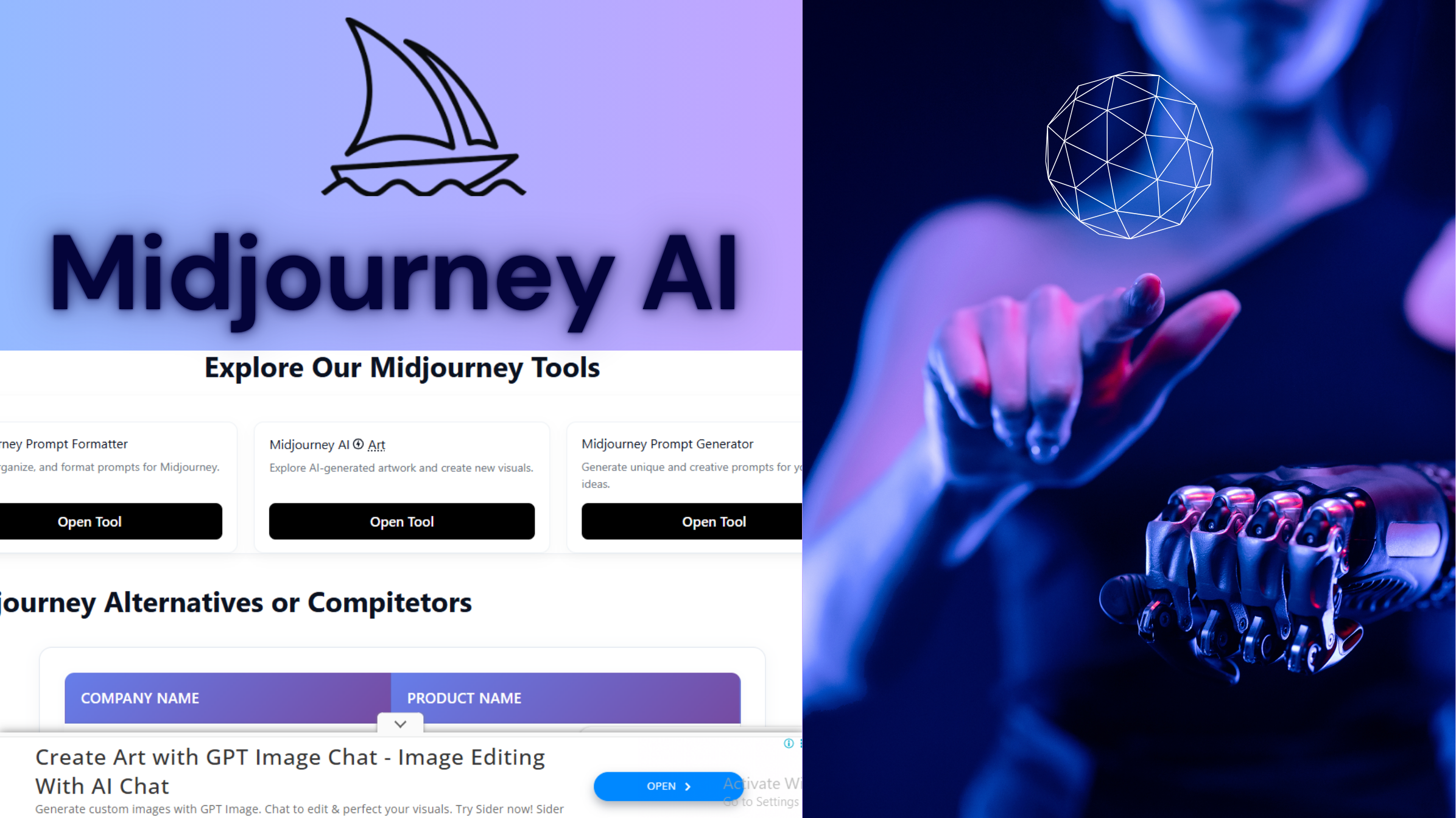This report explores the rise of Midjourney AI, a leading generative art platform that blends technology and creativity, tracing its development, features, controversies, and its growing influence in the world of digital image generation.
Midjourney AI: Evolving the Future of Generative Art and Image Synthesis
Introduction:
In recent years, the rise of generative artificial intelligence has transformed how we create visual content. Among the most visible platforms in this shift is Midjourney — an AI-driven image synthesizer developed by Midjourney, Inc.. Far more than a novelty, Midjourney has become a focal point in discussions around creativity, design, ethics and intellectual property. Through a combination of powerful model versions, prompt-based generation and an accessible web/Discord interface, it offers new pathways for artists, designers and communicators. At the same time, it stands at the heart of controversies around copyright infringement, moderation and the limits of AI art.
In this report we will examine the origins and evolution of Midjourney, explore its features and design capabilities, compare it to competing tools (such as DALL‑E and Stable Diffusion), delve into the legal and ethical debates surrounding generative AI, and reflect on how the technology is reshaping creative industries and what lies ahead.
Origins and Evolution of Midjourney
Founding and early history
Midjourney, Inc. was founded in San Francisco by David Holz (previously co-founder of Leap Motion) with the mission of expanding “the imaginative powers of the human species.” According to sources, the lab began development around 2021–2022, and launched its Discord community in early 2022 before opening an open-beta for the image generation system on July 12, 2022.
Unlike many AI ventures backed by large venture capital rounds, Midjourney reportedly operated as a lean, self-funded setup, focusing on community feedback and iterative model improvements.
Model versions and feature progression
Since its public debut, Midjourney has released successive versions of its generative model, each improving on accuracy, realism, stylization and user controls. Early versions excelled at imaginative and stylised renderings, whereas later versions focused more on photorealistic imagery and better prompt fidelity. For example, version 5.2 introduced the “Vary (Region)” feature (allowing selective editing of image parts), and other tools such as Style Reference, Character Reference and Image Weight give users more precision and control over the generated pictures.
Additionally, Midjourney expanded its interface: originally available only via a Discord bot, the company launched a full web interface in August 2024, enabling users to use panning, zooming, inpainting and other editing tools directly in browser. (As reported by multiple coverage).
Positioning in the AI image generator space
Midjourney is one of the leading platforms in the broader generative AI tools ecosystem. Competing with DALL-E (by OpenAI) and Stable Diffusion (by Stability AI), it is recognised for its unique aesthetic, community-driven prompt sharing, and high-quality output. Its platform enables users to create detailed images from natural-language prompts—a paradigm that has reshaped digital art and design workflows.

Features, Capabilities and Workflow
Prompt-based generation and image synthesis
At its core, Midjourney functions as a text-to-image AI system: a user inputs a description or “prompt”, and the generative AI model synthesises an entirely new image. This workflow falls under the broader category of AI image synthesis and generative AI tools. Because the tool accepts natural-language prompts, it democratizes access for creators, designers and non-specialists alike.
Key tools for control and refinement
What sets Midjourney apart are several advanced controls that give users subtler influence over the output:
- Image Weight: Users can supply a reference image along with a prompt and set a “weight” value to control how strongly the reference influences the output.
- Vary (Region): This feature allows selective editing of regions within the generated image—useful for refining specific elements without re-generating everything.
- Style Reference / Character Reference: These allow the model to apply consistent styling or character appearance across multiple outputs (helpful for concept art or episodic work).
- Web Editor & Inpainting: With the web interface, creators can pan, zoom, and edit specific parts of a generated image (inpainting) to fine-tune details.
- Discord Bot Integration: The original workflow remains via a Discord bot, where users type commands, upload references and share prompt results with a community.
These tools together give Midjourney’s users a sophisticated creative workflow: prompt → refine → iterate, allowing rapid prototyping and visual concept generation at scale.
Applications across industries
Because of its capability to generate unique visual content quickly, Midjourney has been adopted across creative sectors:
- Advertising & Marketing: Agencies use AI image generator tools like Midjourney to create fast visual prototypes, campaign concepts, and custom visuals without relying solely on stock imagery.
- Architecture & Design: Designers generate mood boards, concept visuals and speculative design renderings using prompt-based image synthesis.
- Storytelling, Illustration & Publishing: Authors and illustrators use Midjourney to iterate storyboards, character design and scene visuals, sometimes combining with traditional illustration.
- Personal Creative Work: Hobbyists and creators explore AI-generated art for experimentation, social media shareables, and community engagements.
In many ways, Midjourney and its peer systems are acting as “accelerators” for visual ideation—speeding up what once required human sketching or photo sourcing into seconds of prompt input and iteration.
Midjourney vs Competitors: DALL-E, Stable Diffusion and Others
Midjourney vs DALL-E
Comparing Midjourney with DALL-E (OpenAI):
- DALL-E has been known for strong adherence to prompts and structured output, especially in earlier versions.
- Midjourney, meanwhile, often yields more expressive, stylised, and artistically rich imagery—favoured by creative professionals for mood-centric work.
- In community discussions, users sometimes prefer Midjourney when they want artistic flair or concept art, and DALL-E when they need more literal and controlled imagery.
Midjourney vs Stable Diffusion
On the other front, Stable Diffusion (developed by Stability AI) offers a more open-source flavour, allowing developers to fine-tune models and deploy locally, whereas Midjourney is a managed, subscription-based service.
Stable Diffusion may be chosen for more technical or custom-model use cases (fine-tuning for a brand style, for example). Midjourney appeals when the user wants high-quality output without managing infrastructure or modelling.
Position in the generative AI landscape
Midjourney occupies a unique niche: high-fidelity, visually rich output combined with ease of use and community prompt sharing. In the context of generative AI tools, it stands as a bridge between purely experimental code-first image models and enterprise-level visual platforms.
Consequently, prompts such as “Midjourney vs DALL-E” and “Midjourney vs Stable Diffusion” remain common in forums and creative professional discourse, as practitioners evaluate what system fits their workflow, aesthetic requirements and budget.
Legal, Ethical and Industry Challenges
The copyright-infringement and lawsuit landscape
One of the most serious issues facing Midjourney relates to copyright and intellectual property. A landmark case was brought by artists and major studios, alleging that Midjourney (and its peers) trained models on copyrighted works without permission and produced derivative images infringing on existing work. A U.S. federal judge declined to dismiss core copyright-infringement claims against Midjourney, allowing them to advance.
Notably, on June 11, 2025, media giants The Walt Disney Company and NBCUniversal filed a federal lawsuit against Midjourney, Inc., accusing the company of enabling “endless unauthorized copies” of characters such as those from Star Wars and the Minions. These legal challenges underscore that the generative AI industry is rapidly becoming a battleground for intellectual property rights and creative-economy protection.
Content moderation, bias and ethical concerns
In addition to copyright, other ethical dimensions emerge:
- AI-powered content moderation: As image generators become more capable (and sometimes more realistic), misuse (e.g., deepfakes, mis-information, sensitive content) is a concern. Platforms like Midjourney must balance openness with responsibility.
- Bias and representation: Generative AI models reflect the data on which they are trained. If training datasets lack diversity or over-represent certain styles or culture, they may perpetuate biases or limit creative representation.
- Originality and authorship: When a human sets a prompt and an AI renders the image, questions arise: who is the author? Can such images be copyrighted? The U.S. Copyright Office has rejected some artists’ applications where AI was a significant contributor.
- Impact on creative labour: Some illustrators and artists worry that widespread access to AI art generators will commoditise concept art and visual design labour, or push prices down. At the same time, others see them as tools that augment rather than replace human creativity.
Industry implications and business-model shifts
For the creative industries (advertising, publishing, entertainment) the rise of platforms such as Midjourney represents a shift in workflow, budget allocation and visual asset creation. Visual content that once required time, photo-shoots or licensing may now be produced via generative prompts—with implications for how agencies budget, how stock-image platforms perform, and how artists position themselves in the market.
At the same time, legal uncertainty—especially around copyright, licensing of training data, and derivative output—introduces risk. Companies using these tools must monitor legal developments and potentially prepare for licensing or attribution obligations.
Technical and Workflow Considerations for Creators
Prompt engineering and best practices
To achieve high-quality results with Midjourney (and comparable systems), users need more than just a text prompt—they need prompt-based generation skill, an understanding of style, composition, image weight, aspect ratios, and iteration. Some key considerations:
- Use descriptive language: specify subject, composition, style (e.g., “cinematic lighting”, “4k”, “oil painting”).
- Leverage Midjourney Style Reference and Character Reference to maintain consistency across images when doing series work.
- Adjust Image Weight when using a reference image to guide the model towards a visual target while still allowing creative flexibility.
- Use Vary (Region) when you want to refine or redo a portion of the image rather than the whole.
- Iterate prompts: generate multiple variants, choose the one you like, then upscale, mix or refine.
- Explore community-shared prompts for inspiration—Midjourney has a large Discord community.
Integration into creative pipelines
Designers and studios adopting Midjourney will typically integrate it into their workflow as follows:
- Rapid concept generation: Use Midjourney for mood boards, visual exploration.
- Selected iteration: Choose a concept from AI output and refine it via Midjourney tools or traditional image-editing software (Photoshop, Illustrator).
- Finalisation: Use the refined image for presentation, assets, storyboard, or as reference for human-driven work.
- Licensing/rights considerations: If the output will be used commercially, ensure that the AI-creator’s terms and any copyright implications are understood.
Versioning and quality improvements
As each version of Midjourney model improves, creators should be aware of version differences: e.g., Midjourney V5 produced more photorealistic output than earlier versions; later versions focus on text fidelity and fewer artefacts. Choosing the correct version for your use case (stylised art vs photorealism vs concept art) can influence final results.

Midjourney in Design & Advertising: Real-World Impact
Visual prototyping and creative acceleration
In advertising, the ability to generate unique visual concepts quickly allows agencies to test more ideas with less time and budget. Where once a mood board would take days, tools like Midjourney reduce it to hours. This accelerates ideation and helps creative teams move faster to client-review phases.
Branding and custom asset creation
Brands are increasingly exploring AI-generated imagery for bespoke visuals (campaigns, social media, packaging) rather than relying solely on stock image libraries. Midjourney gives brands flexibility—prompts can be calibrated to match brand colour schemes, visual tone, and campaign narrative.
Democratization of visual production
Independent creators, freelancers and small studios gain access to powerful image-generation that previously required high budgets or specialist artists. This democratises access to visual production and potentially levels the playing field for smaller players.
Strategic challenges for agencies
However, with these opportunities come strategic challenges:
- Ensuring output quality and uniqueness (to avoid saturating visuals across brands).
- Managing copyright risk: reuse of generated images might still raise IP questions.
- Balancing AI-generated visuals with human craftsmanship to maintain authenticity and brand identity.
Outlook: The Future of Midjourney and Generative AI
Continued model innovation and feature growth
Midjourney will likely continue evolving: version updates will yield higher fidelity, better control (for example improved text rendering inside images, fewer artefacts, more reliable styling), deeper integration into workflows, and perhaps real-time or video generation. Indeed, the company has announced features extending into video generation.
Expansion in creative tooling ecosystem
We can expect Midjourney (and generative AI broadly) to integrate more deeply with creative tools—design software, illustration apps, 3D modelling, and video editing. This convergence suggests that image generation won’t remain isolated; it will become part of a broader creative pipeline.
Regulation, licensing and ecosystem maturity
As the legal and ethical frameworks catch up, licensing models may emerge: rights-cleared training datasets, paid licenses for commercial usage, or platforms that enable creators to monetise prompts and styles. The outcome of major lawsuits (such as those involving Midjourney) will shape the commercial viability of AI-generated art and image synthesis.
Changing creative roles and skill sets
For creatives, the role of the “prompter” or “AI-tool operator” is becoming increasingly important. Understanding how to craft prompts, tweak weights, define style references and iterate becomes a new design literacy. Traditional skills—composition, artistic sensibility, visual storytelling—will remain relevant, but will be complemented by new workflows around generative AI.
Broader cultural and economic implications
Generative AI platforms like Midjourney are part of a larger AI boom, influencing not only design and advertising but how society visualises ideas, interacts with media and thinks about creativity. They open up possibilities for new visual genres—rapid concept art, personalised imagery, immersive storytelling—and invite questions about what it means to create, to be an artist, and to own an image in a world where AI can generate visually compelling results on demand.
Reflecting on Controversy, Responsibility and Opportunity
Midjourney’s story is not just about technical progress; it is also a case study in the complex interplay between creativity, business, law and ethics. On one hand, the platform empowers creators, lowers barriers, accelerates workflows and expands the realm of visual possibility. On the other hand, it raises legitimate concerns about copyright infringement, the displacement of creative labour, AI bias, misuse and the erosion of visual originality.
The lawsuits brought by Disney and Universal signal that generative AI is no longer a novelty—it is a substantive challenge to existing business models, copyright regimes and creative practices. How Midjourney, Inc. responds (in terms of dataset licensing, moderation policies, user controls and transparency) will influence not only its fate but that of generative AI as a whole.
For users and organisations adopting Midjourney or similar systems, the opportunity is enormous—but so is the responsibility. Ethical prompt usage, awareness of derivative risks, transparency regarding output provenance, and sensitivity to creators and rights-holders will be key.
Conclusion:
Midjourney AI stands at the frontier of generative art and image synthesis. Its emergence marks a shift in how we conceive of visual creation: from manual sketching and photo sourcing to prompt-driven, iterative AI generation. As one of the premier tools in this space, Midjourney’s evolution—from its Discord roots to a powerful web-based interface, through multiple model versions—is a blueprint for how creative technology can rapidly transform.
At the same time, this transformation is accompanied by important questions: Who owns the output? How far does “AI-generated art” challenge traditional authorship? What impact will this have on artists, designers and visual industries? And how will business models and legal frameworks adapt?
As we move forward, one thing is clear: generative AI tools like Midjourney will continue to reshape design, advertising, storytelling and digital culture. For creators, the task is not simply to adopt the technology, but to integrate it wisely—balancing innovation, ethics and aesthetic vision.
Midjourney isn’t just a tool—it is a conversation starter about the future of art, imagination and machine-augmented creativity.

